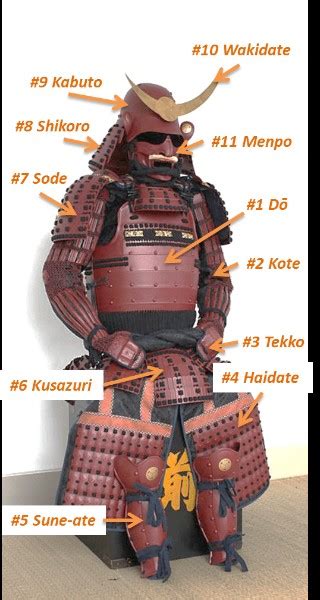How Effective Was Samurai Armor
Ronan Farrow
Apr 04, 2025 · 3 min read

Table of Contents
How Effective Was Samurai Armor? A Deep Dive into Japanese Warrior Protection
Samurai armor, a symbol of feudal Japan, wasn't just aesthetically impressive; it was a crucial element in battlefield survival. But how effective was it really? This article delves into the design, materials, and effectiveness of samurai armor, examining its strengths and weaknesses in various combat scenarios.
The Construction of Samurai Armor: A Masterpiece of Engineering
Samurai armor, or yoroi, wasn't a single piece of equipment but a complex system of interconnected plates. This intricate construction prioritized flexibility and protection. Key components included:
1. Lamellar Construction:
- Flexibility and Coverage: The armor's foundation was often lamellar, comprised of small, individually lacquered iron or leather plates (called kote or kohaze) laced together with silk or leather cords. This design allowed for a surprisingly wide range of motion despite the armor's weight.
- Protection from Multiple Angles: The overlapping plates provided protection from multiple directions, deflecting blows and reducing the impact of piercing weapons.
2. Materials and Craftsmanship:
- Iron and Steel: High-quality iron and steel plates were preferred for their strength and ability to deflect blows. The quality of the metal directly impacted the armor's effectiveness.
- Leather and Lacquer: Leather was used extensively, not just for lacing but also for reinforcing the plates and providing additional protection. Layers of lacquer provided further protection against rust and environmental damage. This meticulous craftsmanship significantly affected longevity.
3. Key Armor Components:
- Do (Armor): The main body armor, offering protection for the torso and back.
- Kabuto (Helmet): Varied significantly in style and design, featuring distinctive features like menpo (face mask) and shikoro (neck protector) for added protection.
- Kote (Gauntlets): Protected the hands and forearms.
- Haidate (Leg Armor): Protected the legs and thighs.
Effectiveness in Battle: Strengths and Weaknesses
While samurai armor offered substantial protection, its effectiveness wasn't absolute.
Strengths:
- Protection against slashing and piercing weapons: The layered construction effectively deflected many sword cuts and spear thrusts, particularly if the armor was well-maintained and of high quality.
- Flexibility: The lamellar structure allowed for considerable movement, allowing the samurai to fight effectively.
- Psychological impact: The intimidating appearance of the armor could demoralize opponents.
Weaknesses:
- Vulnerability to powerful blows: Very powerful blows from polearms, or repeated strikes, could still penetrate or damage the armor.
- Weight and encumbrance: The weight of the armor could severely restrict movement and cause fatigue, especially in prolonged battles or hot weather.
- Maintenance: The armor required regular maintenance and repair, which was a considerable undertaking. Lack of maintenance decreased its effectiveness dramatically.
- Specific weak points: Gaps in the armor's design, such as the joints, remained vulnerable to attack.
Evolution and Adaptation
Samurai armor evolved over centuries, reflecting changes in warfare and weaponry. As firearms became more prevalent, modifications to the armor were introduced to offer better protection against bullets. However, the effectiveness remained tied to factors such as materials, workmanship, and maintenance.
Conclusion: A Powerful, but Imperfect Defense
Samurai armor was a remarkably effective piece of defensive equipment for its time. Its design, materials, and craftsmanship provided substantial protection against many types of weapons. However, it wasn't invincible, and its effectiveness was contingent on several factors. Understanding both its strengths and weaknesses provides a more complete picture of samurai warfare and the crucial role armor played in it.
Featured Posts
Also read the following articles
| Article Title | Date |
|---|---|
| How Do I Fix My Mazda Keyless System Malfunction | Apr 04, 2025 |
| How Do You Make Breast Milk Soap | Apr 04, 2025 |
| How Does A Break Barrel Air Rifle Work | Apr 04, 2025 |
| How Do You Get To Whitehaven Beach | Apr 04, 2025 |
| How Do I Make My Hot Water Last Longer | Apr 04, 2025 |
Latest Posts
Thank you for visiting our website which covers about How Effective Was Samurai Armor . We hope the information provided has been useful to you. Feel free to contact us if you have any questions or need further assistance. See you next time and don't miss to bookmark.
